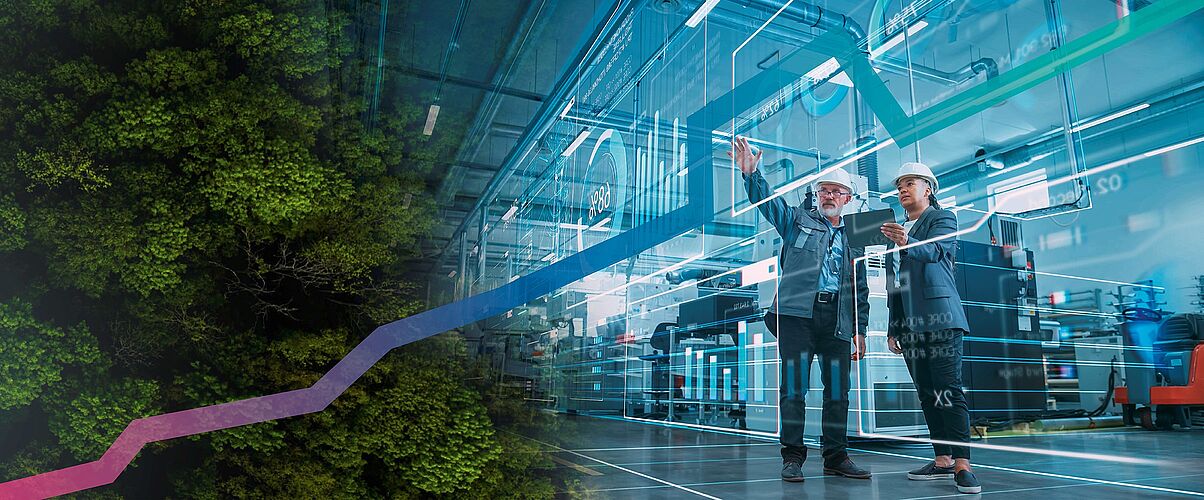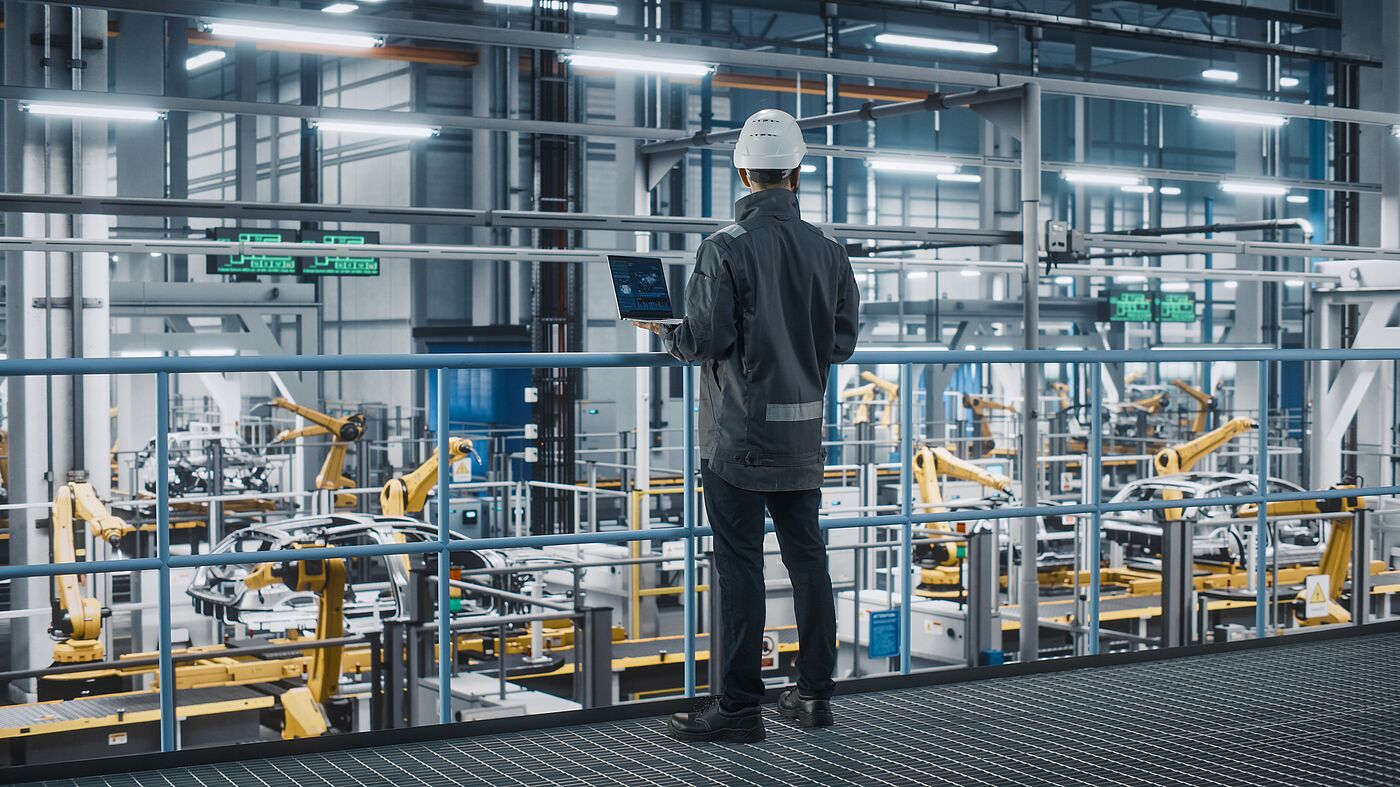
Green Products: Sustainable Production as the Key to a Green Future
Green products that have as little impact as possible on the environment during production, use, and disposal will play an integral role in the industry of the future. After all, legal mechanisms to combat climate change, such as the carbon tax and bonus/penalty systems, ensure that high greenhouse gas emissions and a lack of sustainability have a direct impact on costs. We can help you measure the environmental impact of your products over their entire life cycle and draw the right conclusions for areas such as purchasing, production strategy, and recycling.
What Is a Green Product?
A green product is a sustainably manufactured product with a minimized carbon footprint, an optimized supply chain geared towards decarbonization, and ideal recycling properties. Essentially, the aim is to bring products to the market that have as little impact as possible on the environment during their manufacture, use, and disposal.
To create a green product, your company needs to adopt a holistic approach that focuses on the production system and strategy, the raw materials used, as well as the environmental impact during the product’s use and disposal, including suitable recycling concepts. Other factors to consider include, for example:
- Innovative designs that allow deliberate use of scarce raw materials and improve the environmental footprint of the product during use.
- The primary energy used at the production site.
- The available production technology.

Why Is It Important to Produce Green Products?
If companies don’t succeed in making their products “green” and “environmentally friendly,” it will directly affect their profitability in the future. Carbon emissions already result in higher costs through the European Emissions Trading System (ETS) today. This trend will be reinforced by the EU’s Carbon Border Adjustment Mechanism (CBAM) in the coming years.
This underscores the importance of considering sustainability objectives in the early stages of the product development process for financial reasons alone. In addition, there are other advantages to aligning production systems with the manufacture of green products:
- Transparency: Green products and sustainable production make it possible to thoroughly evaluate all aspects of sustainability in product manufacturing. The result is a holistic foundation for improving environmental impacts.
- Ability to provide information: Suppliers who want to survive on the market must be able to communicate their environmental performance to customers.
- Public image: Manufacturers (especially small and medium-sized companies and suppliers) can positively differentiate themselves from their competitors through green products.
- Opportunities on the market: The growing demand for green products allows suppliers who prioritize decarbonization, energy efficiency, and sustainability to maintain and potentially increase their market share.
How Can Companies Develop a Green Product?
In order to produce green products, companies need to have a sustainable production system. But that’s not all. To develop and manufacture a green product, you need a sustainability strategy that firmly incorporates aspects such as greenhouse gas-neutral production, circular economy practices, and recycling into your overall strategy. To achieve this, you need to identify all the mechanisms you can use to reduce greenhouse gases in your organization.
Product life cycle engineering has proven its worth in this context. This approach enables your company to measure a product’s sustainability performance over its entire life cycle. Additionally, it provides an overview of the financial investment required to launch a sustainable product.
A green product requires cross-functional approaches that consider areas such as product development, manufacturing processes, and material procurement. The focus is particularly on the product development process and the production system. To achieve this, your teams must address issues such as potential alternative materials, innovative designs, or the availability of raw materials as early as possible. This is the only way to permanently reduce environmental impacts both during manufacturing and after the end of the product’s useful life, as well as for recycling raw materials in line with a functioning circular economy (i.e., reduce, reuse, recycle).
Don’t Neglect the Utilization Phase and Disposal
Sustainability objectives shouldn’t only focus on production. When it comes to a green product, it’s more about considering products from the manufacturing phase through to utilization and recycling (i.e., “cradle to cradle”). Experience has shown that there are numerous opportunities to reduce emissions and recycle as many resources as possible, or at least use biodegradable resources, particularly in the context of waste disposal. Handling raw materials in an environmentally friendly manner during disposal can also lead to significant cost savings.

How Can Ingenics Help You?
Manufacturing green products requires a holistic approach. A zero-emissions company is fundamentally built on three pillars:
- A green supply chain encompasses all logistics activities from the supplier to the customer.
- The green factory concept applies to the company’s own production facilities at the factory level.
- Green products primarily relate to product development, manufacturing processes, and material procurement at the product level.
For this reason, in addition to production, we also focus on areas such as development, procurement, shipping, and energy management on the path to launching a green product. Initially, we help you assess the environmental impact of products throughout their life cycle, utilizing methods such as a production sustainability assessment and product life cycle engineering. This creates transparency for decision-making, which is essential for a KPI-based, quantitative assessment of product sustainability and ensures the ability to report sustainability to both customers and government agencies.
A status-quo analysis helps our consultants work with you to identify suitable measures for reducing your environmental impact. You can use this framework as a guide on your path to launching a green product. We then support you in modifying your production system to leverage the identified sustainability potential. This includes establishing a reduction in carbon emissions as a target value in product development (design-to-CO2) and with product costs during the conceptual design phase (design-to-cost). This ensures an ideal balance between costs and benefits.
In addition, we support decarbonization in procurement by helping companies increase data transparency within the supply chain, implementing emission reductions together with suppliers, and conducting supplier assessments.
Your Benefits at a Glance:
Sustainability
Sustainability
Collaborating with us, you’ll develop a sustainable, future-proof corporate strategy that enables you to meet the expectations of legislators, customers, and stakeholders.
Holistic Approach
Holistic Approach
You’ll assess the product’s entire life cycle, from design to disposal or recycling.
Transparency for Decision-Making
Transparency for Decision-Making
You’ll receive all the facts that are necessary for evaluating the product’s sustainability.
Ability to Report
Ability to Report
All the information that customers and government agencies need is available.
Usefulness
Usefulness
We perform a detailed cost-benefit analysis for you of any measures that can reduce environmental impacts.
Attractiveness
Attractiveness
Manufacturing sustainable products helps your company in competing for customers and employees.
Applicability
Applicability
We work with you to design products and processes that fit your current underlying conditions (i.e., existing products, product groups, and production lines, etc.) as best as possible.
Learn More about Sustainability and Green Products
Do you have questions about topics such as “green products” and “sustainable production” in the industrial sector? Then don’t hesitate to contact us to schedule your no-obligation consultation!